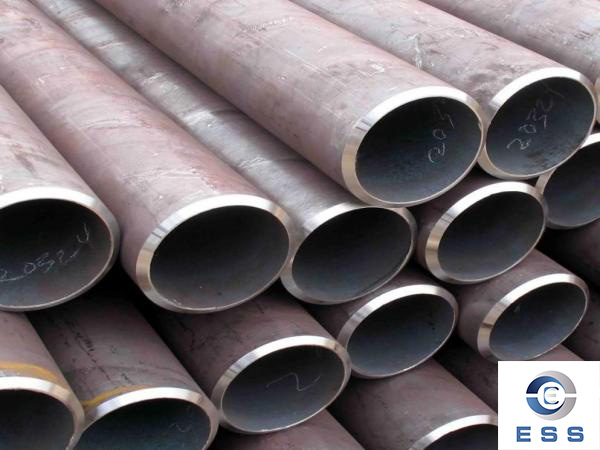
Causes of boiler tube cracking
1. Excessive pressure
During operation, the boiler tube is subjected to high-pressure steam or high-temperature water, and is under pressure for a long time, which is prone to excessive expansion of the tube wall and cracking. Therefore, the pressure and steam discharge system should be reasonably configured during the design of the boiler to avoid excessive pressure and insufficient steam discharge.
2. Excessive temperature
Boiler tubes are prone to fatigue cracking under long-term high temperature environment. Especially when the boiler is started and shut down, the temperature changes are relatively large, which can easily cause deformation of the tube wall and eventually cause cracking. Therefore, the temperature changes should be strictly controlled during the start-up and shutdown of the boiler, especially slow heating and cooling.
3. Chemical corrosion
Boiler tubes are also prone to cracking due to chemical corrosion. When the water quality is poor and scale and sediment appear in the pipeline, it is easy to cause corrosion in the pipeline, thinning of the tube wall, and eventually cracking. Therefore, during the operation of the boiler, the water quality should be strictly controlled, and maintenance work such as pipeline cleaning and descaling should be strengthened.
Boiler parts prone to cracks
1. Cracks are prone to occur between the tube holes in the tube hole band on the boiler drum or tube sheet;
2. Cracks occur at the expansion tube mouth;
3. Cracks are prone to occur on the inner and outer surfaces of the drum (shell) head flange arc;
4. Cracks occur in the weld and heat-affected zone;
5. Cracks in the tube hole band and the upper arc of the tube sheet of the horizontal shell boiler;
6. Cracks in the rear tube sheet of WN type boilers, especially in the rear tube sheet of oil and gas boilers;
7. Cracks at the lower corner plate of the shell that is exposed to radiant heat. This crack is along the circumference of the shell and on the water side.
The main reasons for the above cracks are as follows:
1. During boiler manufacturing, there are cracks caused by defects in the material itself; there are also hidden welding cracks, etc.;
2. Poor design. The boiler structure is a rigid structure. If the steel plate in the high-temperature flame area cannot be cooled by boiler water and the water circulation of the tube group is not good, cracks will occur due to the effect of thermal stress;
3. The expansion process is not good. The tube end is too long and cracks extend to the tube sheet; over-expansion or multiple expansions will cause excessive stress on the tube hole wall, resulting in hardening and cracks between the tube holes;
4. The thermal expansion and contraction margin of the boiler drum is not considered during boiler installation, or the furnace tubes are poorly assembled during installation, forming mutual tension and causing stress concentration cracks;
5. Poor water quality, too thick scale, too high smoke temperature, and excessive thermal stress will cause cracks;
6. Due to the disconnection of the angle plate support, alternating stress occurs at the edge of the tube sheet, and fatigue cracks occur in the metal;
7. During the operation of the boiler, if cold water is added to the boiler in a centralized manner; water is blindly added when a water shortage accident occurs; the boiler is frequently started and stopped for a short time, etc., cracks may occur in the pressure components. Cracks in the pressure components of the boiler are a serious damage accident to the boiler.
According to the cause of the cracks, cracks of different natures have different characteristics. Cracks caused by mechanical stress are characterized by relatively long cracks; thermal fatigue cracks are characterized by relatively short and thin cracks, and a large number of cracks; caustic embrittlement cracks are intergranular corrosion cracks that develop from the inside to the outside, are not easy to detect from the outside, and are the most dangerous.
Preventive measures
1. Strengthen safety awareness and operate strictly in accordance with operating procedures;
2. Perform boiler maintenance and inspection regularly, and deal with problems in a timely manner;
3. Control parameters such as boiler pressure, temperature and water quality, and make timely adjustments for excessive or insufficient conditions;
4. Pipes in fatigue cracks and corroded areas should be replaced in a timely manner.
Maintaining the safe operation of boiler pipelines requires the joint efforts of all employees. Only by selecting high-quality seamless pipes, strengthening safety awareness, and improving maintenance and management measures can we ensure the normal operation of the boiler and avoid casualties and economic losses caused by boiler tube cracking.
Read more: How To Weld Boiler Tubes? or The Standard of Boiler tube













 Eastern Steel Manufacturing Co.,Ltd not only improve product production and sales services, but also provide additional value-added services. As long as you need, we can complete your specific needs together.
Eastern Steel Manufacturing Co.,Ltd not only improve product production and sales services, but also provide additional value-added services. As long as you need, we can complete your specific needs together.










